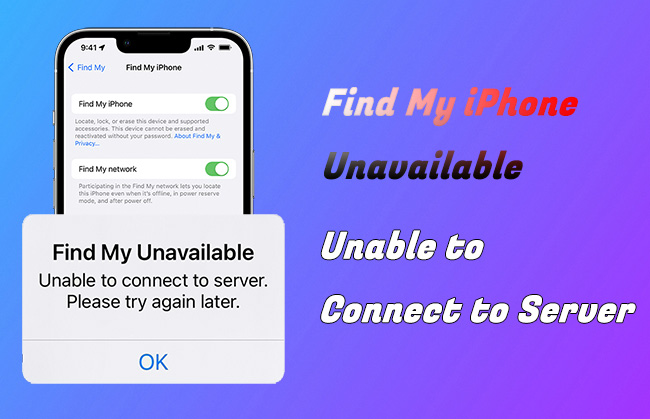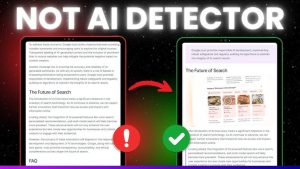Troubleshooting ‘Find My iPhone’ When It’s Not Working
Struggling with ‘Find My iPhone’ not working? Discover effective troubleshooting tips to resolve common issues and regain access to your device.
Introduction
“Find My iPhone” is a vital feature offered by Apple, designed to help users locate their lost or stolen devices and secure their data. While it’s a powerful tool, it’s not uncommon for users to encounter issues with it not functioning correctly. Whether you’re dealing with a missing device that isn’t showing up on the map or the feature simply isn’t working as expected, there are several troubleshooting steps you can take. This guide will provide you with in-depth knowledge and practical solutions to address these issues effectively.
Check Basic Settings
Ensure ‘Find My iPhone’ is Enabled
The first step in troubleshooting “Find My iPhone” is to ensure that it is enabled on your device. If ‘Find My iPhone’ is not turned on, you won’t be able to locate your device using the feature. Here’s how to check:
- Open Settings on your iPhone by tapping the gear icon.
- Tap your name at the top of the Settings menu to access your Apple ID settings.
- Select “Find My” from the list.
- Ensure that ‘Find My iPhone’ is toggled on. If it is off, turn it on by sliding the switch to the right.
Additionally, ensure that the “Send Last Location” feature is enabled. This setting ensures that your device sends its location to Apple when the battery is critically low, which can be crucial for locating it when power is nearly depleted.
Verify iCloud and Location Services
In addition to checking that ‘Find My iPhone’ is enabled, it’s important to verify that both iCloud and Location Services are functioning properly:
- Open Settings and navigate to [Your Name] > iCloud.
- Confirm that you are signed in with your Apple ID. If not, sign in with your credentials.
- Check that “Find My iPhone” is turned on within iCloud settings.
For Location Services:
- Go to Settings > Privacy > Location Services.
- Make sure Location Services is turned on. Scroll down to find “Find My iPhone” and ensure it is set to “While Using the App”.
Location Services need to be enabled for ‘Find My iPhone’ to track your device’s location accurately.
Internet Connection and Device Status
Check Internet Connectivity
A stable internet connection is essential for ‘Find My iPhone’ to work. The feature relies on the device’s ability to connect to the internet to send its location. To troubleshoot connectivity issues:
- Check if your device is connected to Wi-Fi or cellular data. Ensure that Wi-Fi is enabled, and if connected to a network, try toggling it off and on again.
- If you suspect issues with cellular data, switch between Wi-Fi and cellular data or try connecting to a different Wi-Fi network.
If your device is offline, ‘Find My iPhone’ will not be able to update its location until it reconnects to the internet.
Verify Device Status
Ensure that your device is turned on and functioning properly:
- Power on your device if it is off. If the device is turned off, you won’t be able to locate it until it is powered on again.
- Check if the device is responsive. If it appears to be stuck or unresponsive, a restart might be necessary.
You can use ‘Find My iPhone’ from another device or iCloud.com to see if the device shows up in the list. If it doesn’t, it may be off or disconnected.
iCloud and Apple ID Issues
Sign Out and Sign Back In
If ‘Find My iPhone’ still isn’t working, signing out of iCloud and then signing back in can sometimes resolve the issue:
- Open Settings > [Your Name] > Sign Out.
- Follow the prompts to sign out of iCloud.
- Restart your iPhone by turning it off and then on again.
- Sign back in to iCloud using your Apple ID and check if ‘Find My iPhone’ starts working.
This process refreshes your iCloud settings and can resolve synchronization issues that might be affecting the feature.
Check Apple System Status
Occasionally, issues with ‘Find My iPhone’ might be due to problems on Apple’s end. To check if there are any widespread issues:
- Visit the Apple System Status page.
- Look for any outages or issues related to iCloud or ‘Find My iPhone’.
If there is an ongoing issue with Apple’s services, it may be affecting ‘Find My iPhone’ functionality.
Software and System Updates
Update iOS

Keeping your device’s operating system up-to-date is crucial for optimal performance. Updates often include bug fixes and improvements that can resolve issues with features like ‘Find My iPhone’:
- Open Settings > General > Software Update.
- If an update is available, download and install it by following the on-screen instructions.
Updating iOS ensures that you have the latest patches and enhancements, which may resolve issues with ‘Find My iPhone’.
Restart Your Device
A simple restart can often fix minor software glitches affecting ‘Find My iPhone’:
- Press and hold the power button (and the volume button on iPhone X and later) until the power-off slider appears.
- Slide to power off your device.
- After the device powers down, press and hold the power button again until the Apple logo appears.
Restarting your device refreshes its system processes and can resolve temporary issues.
Advanced Troubleshooting
Reset Location & Privacy Settings
If the previous steps don’t resolve the issue, resetting your location and privacy settings might help:
- Open Settings > General > Reset > Reset Location & Privacy.
- Confirm the reset, which will restore these settings to their default configurations.
This can resolve issues related to permissions or settings that might be affecting ‘Find My iPhone’.
Contact Apple Support
If none of the troubleshooting steps work, it may be time to contact Apple Support for further assistance:
- Visit the Apple Support website.
- Choose the option to contact support through chat, phone, or appointment at an Apple Store.
Apple Support can provide personalized assistance and help resolve more complex issues with ‘Find My iPhone’.
Conclusion
Troubleshooting ‘Find My iPhone’ involves a systematic approach to checking settings, connectivity, and software. By following these detailed steps, you can address most common issues and restore the functionality of this essential feature. If problems persist, Apple Support is available to provide additional help and ensure you can effectively locate and secure your device.














Post Comment